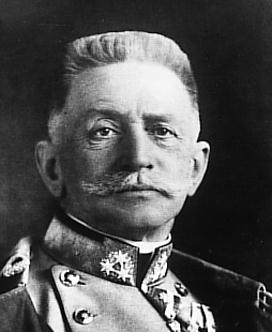THE DUAL MONARCHY
An Austro-Hungarian WWI After Action Report by Jandorus

What's this? Austria-Hungary? That archaic multi-ethnic empire that has luckily been dissoluted at the end of the first world war? Surely that's not a playable nation? Luckily, thanks to The WWI Mod for Hearts of Iron, WWI buffs everywhere can now orchestrate the pointless slaughter that took place in the second decade of the last century. The first global war, in which democracies clashed, technology advanced at an amazing pace, empires were overthrown, and the borders of Europe were completely re-drawn will be the subject of my first AAR. As you might have guessed, I will be guiding Austria-Hungary through all the horrors of the beginning of the 20th century. In the AAR, I will try to intertwine in-game events with a historic narrative, and play the game accordingly. This does not mean I won't deviate from history, for example, I do not intend to let the Austro-Hungarian monarchy end.
I will be playing TFH with the latest version (0.9) of the WWI Mod.
House (Habsburg) rules:
-No couping major powers, overthrowing the Italian government would make the game less interesting, for example.
-Diversified production, the Austro-Hungarian Navy, as well as the airforce, need to be developed too. Which means I will not be able to focus solely on land force.
-Historic gameplay (diplomacy), I will try to play the international diplomatic game historically. Austria-Hungary will have to go to war after the July Crisis. Also, conquering neighbouring nations, the Balkans for example, in order to increase industrial potential, is not allowed. Influencing nations through diplomacy is absolutely fine, of course.
Suggestions and feedback would be very welcome.
Thanks for reading in advance!
An Austro-Hungarian WWI After Action Report by Jandorus

What's this? Austria-Hungary? That archaic multi-ethnic empire that has luckily been dissoluted at the end of the first world war? Surely that's not a playable nation? Luckily, thanks to The WWI Mod for Hearts of Iron, WWI buffs everywhere can now orchestrate the pointless slaughter that took place in the second decade of the last century. The first global war, in which democracies clashed, technology advanced at an amazing pace, empires were overthrown, and the borders of Europe were completely re-drawn will be the subject of my first AAR. As you might have guessed, I will be guiding Austria-Hungary through all the horrors of the beginning of the 20th century. In the AAR, I will try to intertwine in-game events with a historic narrative, and play the game accordingly. This does not mean I won't deviate from history, for example, I do not intend to let the Austro-Hungarian monarchy end.
I will be playing TFH with the latest version (0.9) of the WWI Mod.
House (Habsburg) rules:
-No couping major powers, overthrowing the Italian government would make the game less interesting, for example.
-Diversified production, the Austro-Hungarian Navy, as well as the airforce, need to be developed too. Which means I will not be able to focus solely on land force.
-Historic gameplay (diplomacy), I will try to play the international diplomatic game historically. Austria-Hungary will have to go to war after the July Crisis. Also, conquering neighbouring nations, the Balkans for example, in order to increase industrial potential, is not allowed. Influencing nations through diplomacy is absolutely fine, of course.
Suggestions and feedback would be very welcome.
Thanks for reading in advance!
Last edited:




















